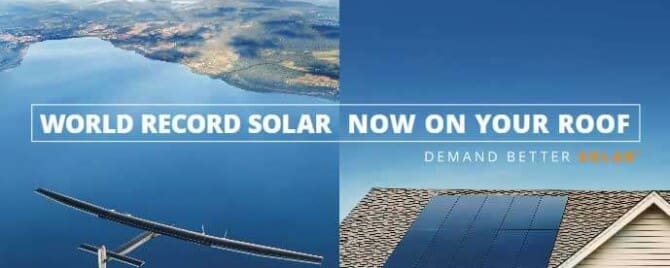With hurricane season around the corner and more conflict brewing abroad, will your home have power if the grid goes down? Solar panels are a great first step towards energy independence, but without a energy storage system, your home will go dark when an outage occurs.
Photovoltaic System Overview
When sunlight hits your solar panels, electricity is generated and then converted from DC to AC currents. Any household needs (HVAC, appliances, WiFi, lights, etc) use this source of power first and draw any remaining required energy from the grid. When your solar panels produce more energy than what is needed, any excess gets pushed back to the grid via the bidirectional meter from your utility company. If you have a home battery, the excess energy will instead be used to charge the battery, for use at night or on cloudy days.
When the power grid goes down, utility workers are sent out to identify and resolve the problem. For their safety, no power can be running through the power lines or substations--meaning your solar panels cannot risk pushing excess energy to the grid. Without a home battery to store excess energy, your photovoltaic system will automatically shutdown during an outage.
This is especially problematic if you have an electric vehicle. No power grid + no backup battery system = you're not going anywhere.
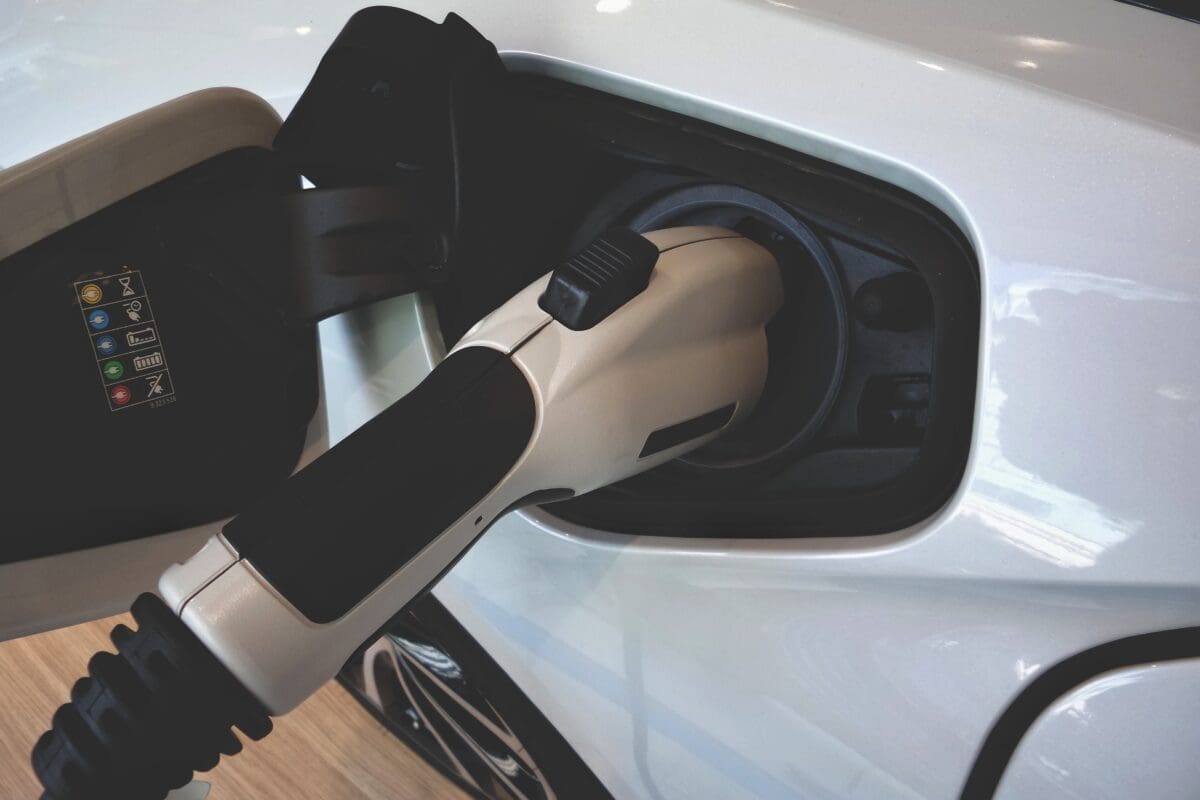
What are the Types of Power Outages?
4 Types of Power Outages
☀ Blackouts
☀ Brownouts
☀ Permanent faults
☀ Rolling blackouts
Blackouts are complete losses of power for a given area around an electrical generation facility; this area can be quite extensive. Most blackouts are caused by major damage that can be quite difficult to fix--sometimes resulting in an outage lasting several weeks.
Brownouts occur when there is a sudden drop in electrical voltage or overall power supply. You'll most likely see your lights dim and certain devices perform poorly or stop functioning altogether with the lowered voltage. Brownouts are typically caused by a sudden demand for utilities and used to prevent a total blackout.
Permanent faults are a sudden loss of power caused by a power line fault. These are relatively quick to fix and don't affect large areas, since they occur along distribution/supply lines to homes, rather than at the point of electrical generation.
Rolling blackouts are different from the above three, as they themselves are planned. In some areas, the electrical infrastructure cannot handle the population demand or the grid itself may be unstable. In emergency scenarios, when the fuel to run the electrical generation is low, rolling blackouts are used to ration until fuel supplies are restored.
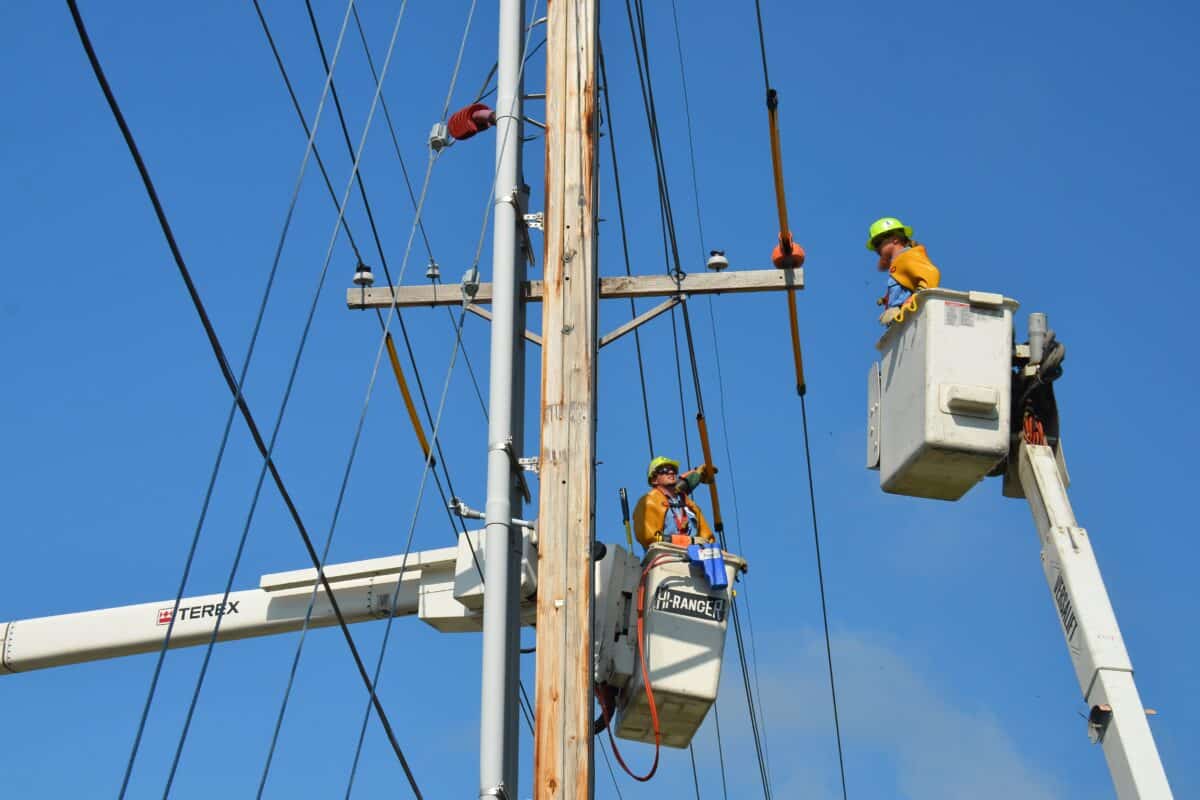
What Causes Most of the Outages in the Cape Fear Region?
In the Cape Fear region, most of our power outages are blackouts and permanent faults resulting from storms of vehicular accidents.
Inclement Weather
While we may not get hit by snow storms or wildfires like our northern and western neighbors, we have our fair share of inclement weather. Since 1851, an average of 2 tropical cyclones affect our state each year. This includes heavy winds, rain, and any damage caused by such. Direct landfalls by tropical storms (39-73 mph) have been made in NC about every 2 years and hurricanes (74+ mph) about every 3.25 years.
Most damage comes in the form of downed lines from fallen tree limbs, wind-blown debris, and ice-buildup when it actually does freeze. As these are distribution lines, these are considered permanent faults which usually only take a couple of hours to a couple of days to fix, and only affect surrounding neighborhoods. If the damaged power line is closer to the electrical generation facility, the affected area would be much greater.
Side note: At Cape Fear Solar Systems, our technology is rated to withstand 150-mph winds (stronger than most roof structures). In our 15 years of business, we've never had a single panel fly off during a storm.
Vehicular Accidents
The other leading cause (at 30%) of power outages in the Cape Fear region is from vehicles crashing into utility poles. According to a Duke Energy spokesperson, vehicular accidents alone caused an average of 50 outages each month in 2020-2021, affecting tens-of-thousands of customers. This too is considered a permanent fault, as it occurs to the distribution lines.
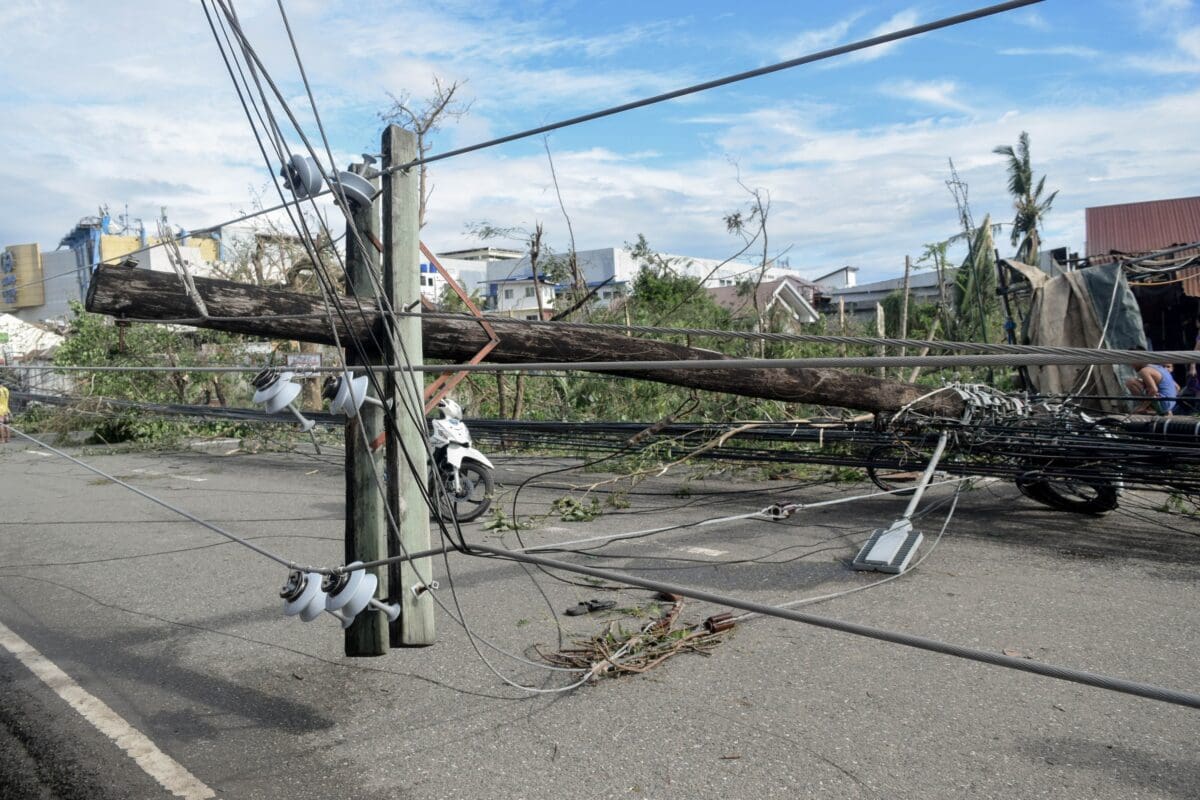
What if Something Happens to the National Grid?
North American Power Grid Overview
The United States is actually made up of 4 separate grids: the Western Interconnection, the Eastern Interconnection, the Alaska Interconnection, and the Texas Interconnection. Each of the grids operates independently and is responsible for generating, storing, transmitting, and distributing the needed electricity in its respective region. Each grid also connects to the others for electrical trade between the grids.
Once power is produced at a generation facility, it goes to a step-up transmission substation, where the voltage is increased and then distributed across one or more long-distance transmission lines. Step-down transmission substations act as a switching point in the power grid, converting the transmission voltage from multiple sources to subtransmission voltage, and sending it to distribution substations closer to consumers. There, voltage is lowered even further for customers and sent to industrial, commercial, or residential consumers.
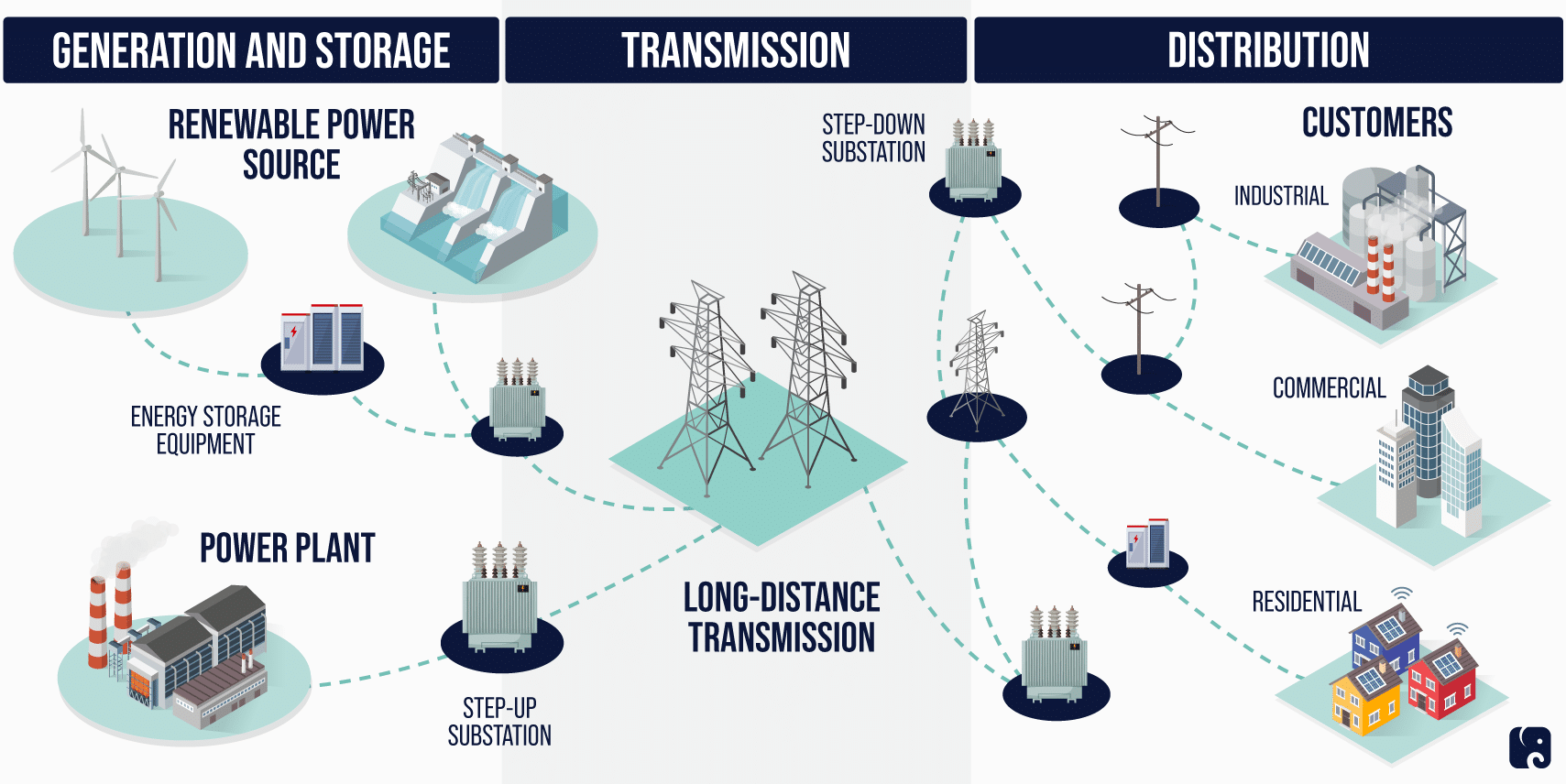
Can Failure on Part of the Grid Affect Me?
According to the U.S. Energy Information Association (EIA), the energy grid “providing multiple routes for power to flow and allowing generators to supply electricity to many load centers…helps prevent transmission line or power plant failures from causing interruptions in service.” Yet, while experts hope “any cyber attacks capable of disrupting power on the grid’s distribution systems would likely only disrupt the electricity distributed locally from any affected substations,” no one knows the full potential effect if certain areas were to be hit. Substations distributing energy to a larger city would obvious affect a larger number of consumers, but there is no public documentation about the extent of a domino effect if certain parts of the grid were to be hit.
Where do the Vulnerabilities Lie in the Power Grid?
According to the 2021 United States Government Accountability Office’s GAO-21-81 report, most of the vulnerabilities may be located in the Industrial Control Systems (ICS), which monitor and control sensitive processes and physical functions during power transmission and distribution. Essentially, if one part of the grid suddenly has an increased demand for power or another has an outage, the ICS will attempt to balance the loads and divert the necessary power. The older legacy systems within the ICS were not designed to connect to networks, much less the internet. While many can be updated, some of the components are too critical to fix offline regularly, and now may no longer even be capable of receiving software security patches or running modern encryption protocols.
An equal factor contributing to the power grid’s vulnerability is the degree of dependency both the ICS and the consumer-installed modules have on the internet and GPS. That’s right, the Internet of Things (IoT) includes components of our power grid as well as your smart thermostat, smart TV, etc. Striving for accessibility, many processes and most consumer-facing products tied into home appliances/utilities now have remote access built in for monitoring, management, and IoT intercommunication. This remote access, if lacking the appropriate cybersecurity measures, could be used as an access point by a hacker. It also presents the question of whether or not those who have been granted access actually have the appropriate cybersecurity measures built into their own networks. While the software management companies for these products hopefully have their own cybersecurity team, the average consumer typically doesn’t even update software regularly, positioning home networks as a potential breach risk.
Addressing the Vulnerabilities
The Federal Energy Regulatory Commission (FERC) has approved mandatory federal cybersecurity standards; however, it (1) has failed to address if they measure up to the federal guidance for critical infrastructures, and (2) cannot even enforce the standards at the local distribution level. Per GAO-21-81, “FERC’s regulatory authority and responsibility specifically excludes facilities used in the local distribution of electricity.” Instead, state and local entities are responsible for overseeing the reliability of the distribution systems, with 90% of the nation’s energy infrastructure being owned by the private sector–just without any mandatory recognized standard.
Nationally, the Department of Energy (DoE) is responsible for protecting or restoring the reliability of the critical electrical infrastructure and the Department of Homeland Security (DHS) for its cyber and physical infrastructure security. In March of 2018, the DoE published the Multiyear Plan for Energy Sector Cybersecurity, outlining their goal for the next 5 years.
On January 20, 2021, President Joe Biden issued Executive Order 13990, whereupon “the Department and the Office of Management and Budget identified opportunities for change, increased awareness, and strengthened protections against high-risk electric equipment transactions by foreign adversaries.”
On April 20, 2021, the Department announced a Request for Information (RFI) focusing on how to effectively strengthen our supply chain again foreign attacks. According to the DoE, this RFI sought to “seek information from electric utilities, academia, research laboratories, government agencies, and other stakeholders on various aspects of the electric infrastructure to ensure that the Department’s recommendations for a replacement executive order appropriately balance national security, economic, and administrability considerations.” On the same day, President Biden also announced a 100-day coordinated effort between the DoE’s Office of Cybersecurity, Energy Security, and Emergency Response (CESER) and electric utilities to modernize cybersecurity defenses.
In November of 2021, the National Renewable Energy Laboratory (NREL) published Cybersecurity Certification Recommendations for Interconnected Grid Edge Devices and Inverter Based Resources, going over a certification testing procedure “to establish a baseline for device-level security and to inform the development of a future voluntary UL cybersecurity certification standard” for distributed energy resources. However, per NREL, “instituting a statewide or nationwide policy or law for cybersecurity standards is difficult. It can take approximately 3 years for a standard to be completely developed, refined, and adopted. Standards for technologies with limited previous research, such as cybersecurity for grid edge devices, often necessitate additional time for initial development.”
On a personal level, you and your family can take a look at what devices are currently connected to your own home network:
☀ Do all of your computers, tablets, and smartphones have appropriate anti-virus and anti-malware software installed?
☀ When was the last time you had said software scan your device for threats?
☀ When was the last time you updated the device’s software?
☀ Do you/your family practice basic cybersecurity safety protocols?
Similarly, take a look at the devices you have your home or plan to have automated with:
☀ Are they name-brand or at least well-known?
☀ Do the manufactures seem to pride themselves on security when you look at their websites?
☀ Are you using them as recommended by the manufacturer, or are they “jail-broken” or “made to work?”
☀ Are they still programmed with the default passwords, or have you changed them?
Can I Disconnect from the Grid?
With today’s lifestyle and energy expenditure, modern household typically use more electricity than they can financially afford to store. While it is technically possible to go off-grid, you’d have to go without modern luxuries, such as central heating, HVAC systems, and more, unless you could afford to purchase a multitude of home batteries. Even then, most utility companies have rules about disconnecting if you live in certain areas.
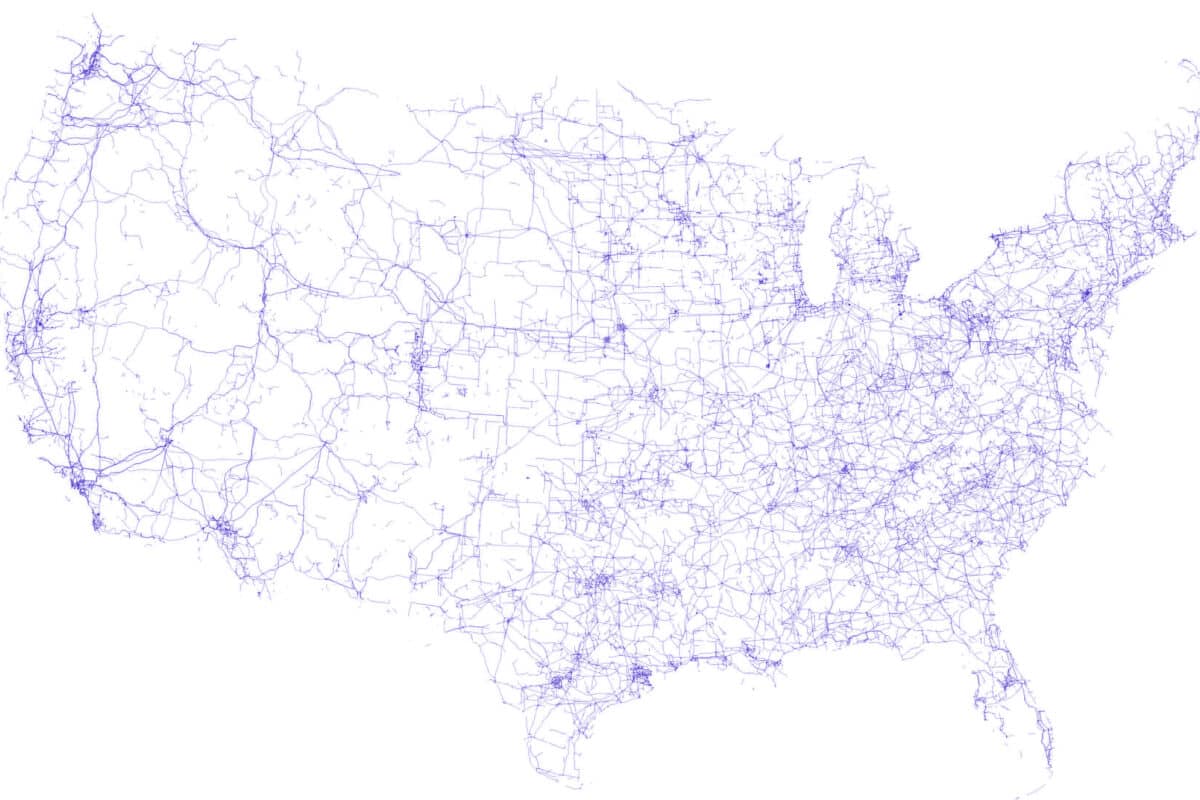
What About a Generator?
While generators are a cheaper alternative to a backup battery system, there are a number of other factors to consider when comparing the two.
Gas Reliance During Gas Shortages
During large-area, extended power outages in the past, there was suddenly a higher demand for gasoline. Everyone needed fuel to power their home generators and chainsaws for downed trees. Hundreds of vehicles would wait in line at the pumps for hours, only to find the gas stations dry when it was their turn. The storms that caused the large-area outages usually also resulted in fallen trees and power lines, presenting obstacles for fuel trucks trying to replenish the gas stations. It took a while for gas to return to the area–sometimes even after the lights came back on.
If you typically evacuate when natural disasters come, a generator may be all you need for the unexpected outages. But, if you prefer to ride out the storm, you need consider what you would do when you no longer have gas for your generator.
Environmental Factors
In order for generators to be operated safely, they have to be placed in a dry, covered area with good ventilation. If it’s not placed appropriately, there’s a high chance of carbon monoxide entering your home and endangering your family.
Generators also produce a high amount of noise pollution, which could prove to be a hindrance to rescue efforts trying to locate survivors during worst-case scenarios.
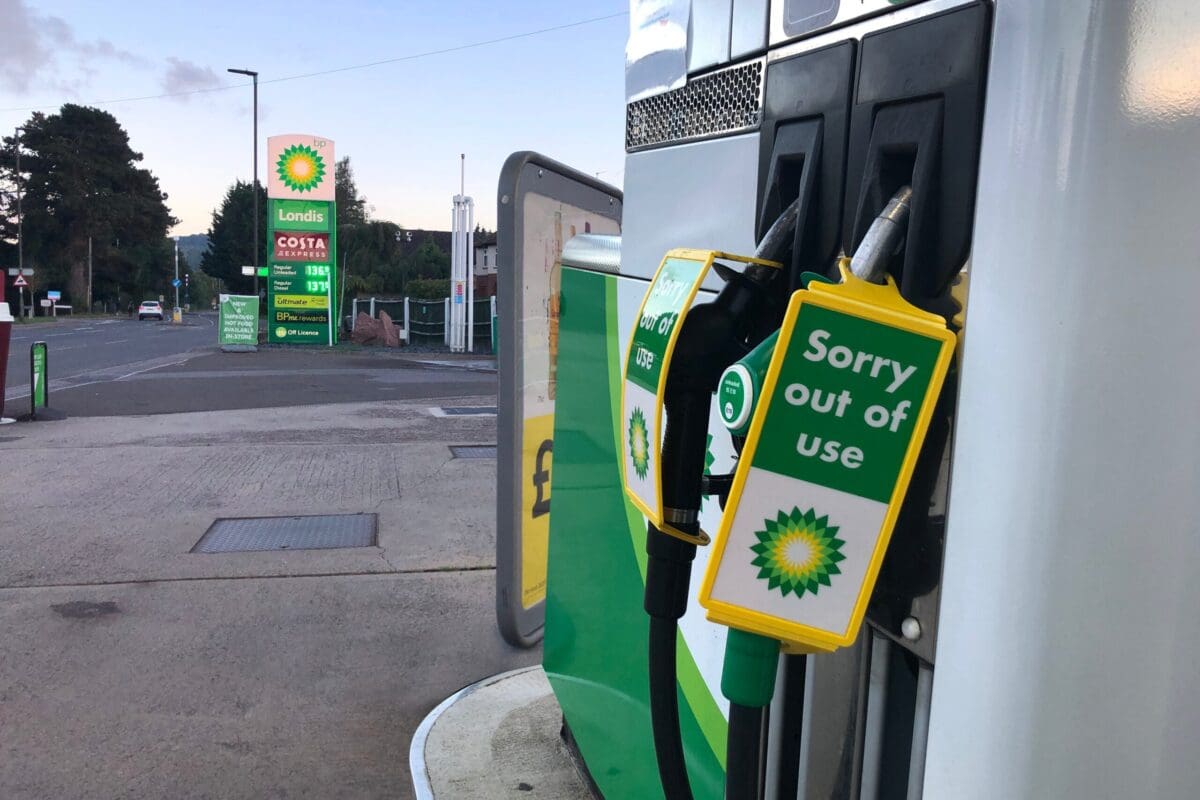
Is a Battery Backup System Worth It?
Ultimately, deciding whether your should have a home battery in your photovoltaic system is up to you.
During our initial free consultation, our project developers analyze your home’s orientation, average utility usage, and what your ultimate goals are with solar panels (offsetting some, most, or all of your energy usage). Our goal is to help you have a system that, if financed, would be less than your current monthly utility bill short-term, and pay for itself long-term.
While home batteries aren’t a mandatory component of photovoltaic systems, they do provide extra security for when you need it the most.
Some factors regarding whether you should consider a backup battery system:
☀ Do you have frequent power outages from storms or vehicular accidents?
☀ How long do those outages typically occur?
☀ Do you/your family have medical needs that require 24/7 electricity?
☀ What is your utility company’s policy with net metering?
☀ Do you have a generator to hold you over until the grid is restored?
☀ Will you be able to get enough gas for your generator during extended outages?
Our project developers specialize in helping you design a system unique to your household, bringing your family one step closer to energy independence.


